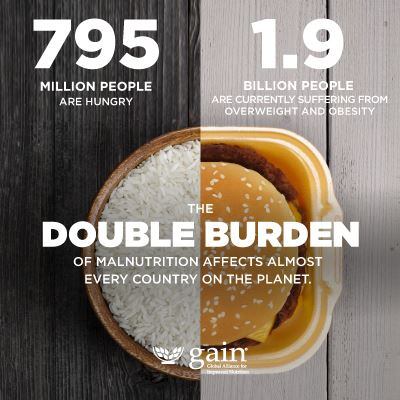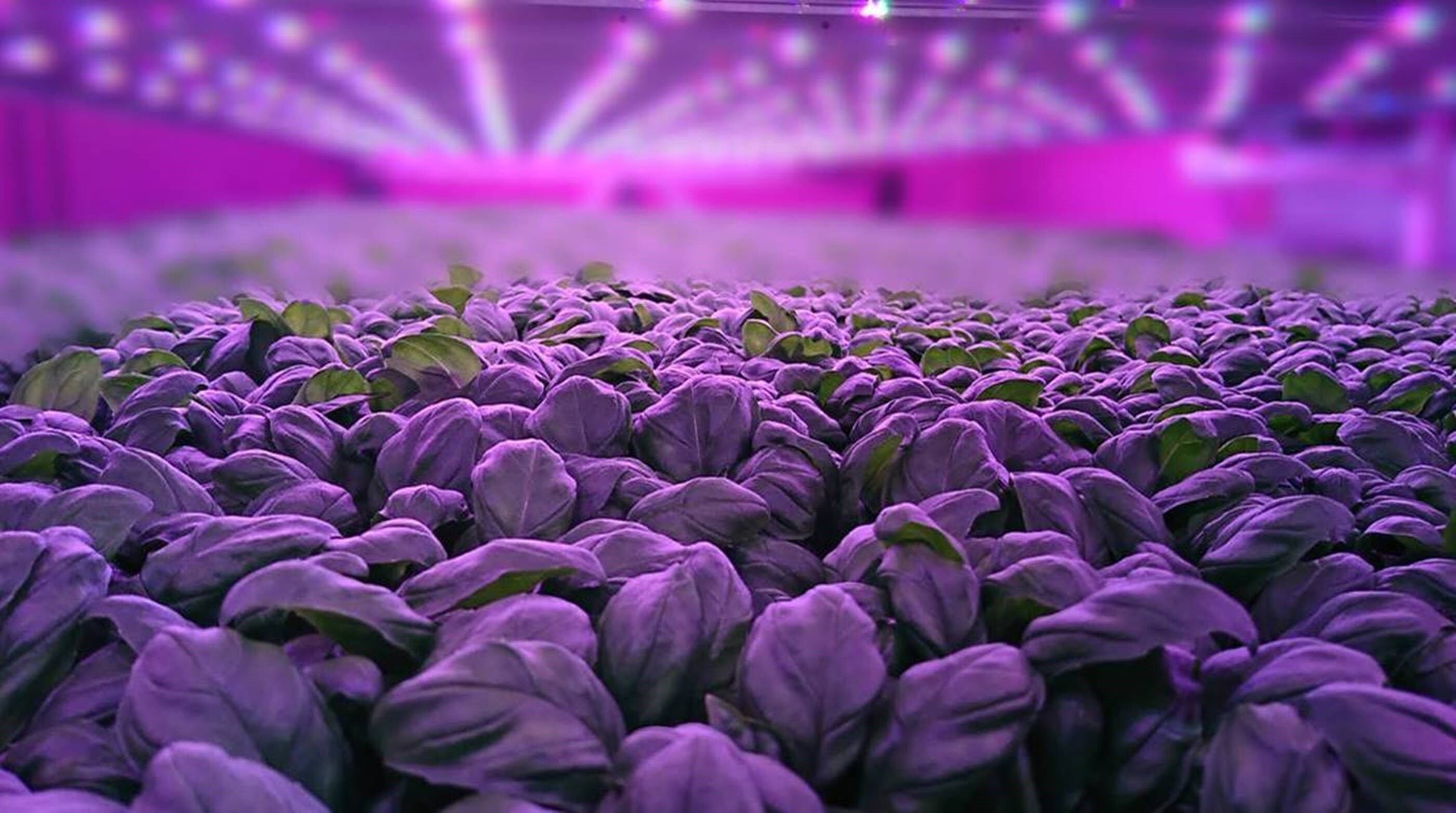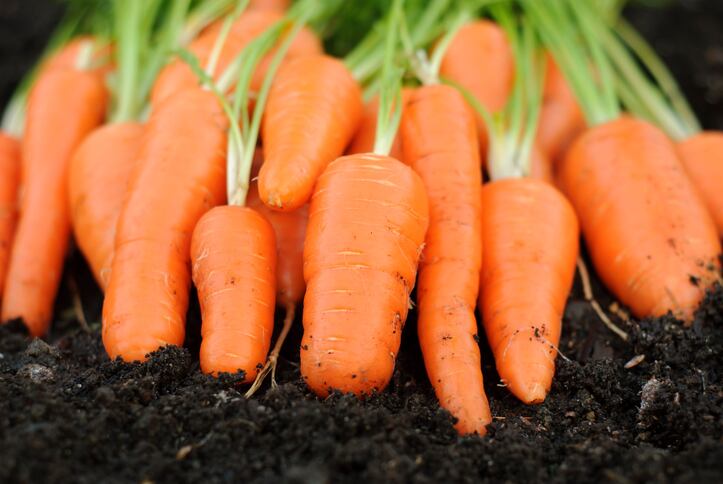This week's report from the FAO made for some depressing reading: Global hunger has reverted to levels last seen a decade ago. Worldwide, one-in-nine people are malnourished. Hunger affected 821 million people last year, the third annual rise since 2015. Globally, poor nutrition is responsible for almost half of deaths in children under five-years-old.
Climate change and the consequent droughts and floods witnessed in 2017 were identified by the FAO as “among the key drivers” for the rise in hunger, alongside conflict and economic slowdowns.
These figures don’t even take into account the weather extremes we have seen this year, with drought hitting food production in parts of the Northern hemisphere and flooding in other parts of the world. Adverse weather patterns have become the new normal. At this rate, it seems clear that the upward trajectory in hunger levels is likely to continue in the near term at least.
The reversal of progress made over the last ten years is a serious cause for concern. Hunger can result in the loss of opportunities on a generational level. Malnutrition can lead to stunted physical development, as well as negative consequences for mental and social development. Indeed, it seems likely that we could witness a rise in the number of resource-related conflicts worldwide, which will only serve to compound the situation.
Not just a developing world problem
The burden of hunger is weighted towards the developing world, with most regions in Africa and South America seeing increased food scarcity, while more than half a billion of the world’s hungriest people live in Asia.
It would be wrong to characterise this as purely a ‘third world problem’, however. Stunting due to poor diet affects a massive 37% of children in Africa and 48% of children in rural India. It also affects 7% of children in the world’s largest economy, the USA. In an announcement on its work to take on hunger alongside Feed the Children, PepsiCo noted that a staggering 26% of the Los Angeles population lives below the poverty line.
Meanwhile, a recent study from UK think-take The Food Foundation found lower income families are priced out of healthy eating, with 4m children living in poverty unable to afford to follow the UK government’s healthy eating recommendations. This in the world’s sixth richest country.
Malnutrition and obesity can live side by side in the same household, even in the same body. Cheaper, highly processed foods fail to provide people with their nutritional requirements. People become trapped in a downward spiral of poor nutrition and ill health, contributing to the rise of other NCDs such as diabetes and heart disease. The societal costs are immense in terms of lost productivity or healthcare expense.

The trend is a serious concern. The UN’s Sustainable Development Goal to eradicate hunger by 2030 is at risk.
But I remain optimistic. The human race is nothing if not adaptable and innovative. The food sector – alongside national governments, research institutions and NGOs – has a massive role to play in combatting global hunger.
Fighting food waste
Currently, around one third of the food produced in the world for human consumption every year — approximately 1.3 billion tonnes — gets lost or wasted.
This is not only a massive financial loss (US$680bn in developed countries and US$310bn in developing countries, according to the UN). In a world where children go to bed hungry, food waste is increasingly recognised as unacceptable on every level.
Food waste occurs at each stage of the food chain, from farmers, to food makers, to retailers, to consumers. The good news is that action is being taken to tackle the challenge.
Investment in companies working to develop food waste solutions has jumped in recent years. As a result, we can see innovation on every front.
Start-ups like LeanPath, which uses data management to reduce spoilage, or RethinkResource, which is helping to develop circular economy uses for waste streams, are bringing innovative new technologies to combat food waste to the table.
Food manufacturers of all sizes are increasingly applying lean thinking principles (first developed in the automotive industry) to improve efficiency, cut costs and reduce waste. Larger corporations have set food waste reduction targets, which they are measuring and reporting back against.
Supermarkets are at the forefront of food waste efforts through initiatives that redistribute food near spoilage or re-package so-called ‘ugly’ produce. Collaboration across the supply chain is strengthening: Tesco, for instance, is spearheading an initiative with some of its largest suppliers to combat food waste.
There is much more to be done, but the level of industry activity in this area is encouraging.
Reformulation
Combatting malnutrition also requires significant work to reformulate products and provide people with affordable good nutrition. The F&B sector’s record in this regard is patchy at best.
Certainly, good progress has been made in some areas. In the UK, for instance, soft drinks have been reformulated to cut sugar levels. However, it seems likely that this development is more the consequence of push factors – the introduction of the soft drinks levy – than any altruistic desire to improve population health.
What the UK example demonstrates is that reformulation can be achieved, largely without sacrificing taste and with little consumer backlash (unlike previous efforts in the nineties when consumer understanding was less evolved).
Sure, there may be some additional expense incurred. But it is worth it. Particularly given rising consumer concern over issues like sugar. Indeed, according to recent research from the UK’s Food Standards Agency, sugar has now replaced price as consumers biggest food concern.
Technological developments have again brought reformulation within reach. This year, Nestlé was able to reduce the sugar content of its Milkybars by 30%. A spokesperson for the world’s largest food company told FoodNavigator that this was achieved through the use of “structured sugar” developed by Nestlé’s R&D team in York.
Reformulation to meet the nutritional needs of a population is not just about what you take out of products, the spokesperson stressed. It is also about the nutrients you add in. In various markets on the African continent, for instance, iron is added to Nestlé such as Maggi stock cubes to meet a particular nutritional deficiency identified in the region.
Advances in ag tech
The food sector needs to go back to its roots and look at how food is produced at a farm level. Technology, again, is part of the answer.
Artificial intelligence, threat modelling, precision spraying and emerging robotics technologies all have the potential to boost on-farm efficiency.
Intelligent Growth Solutions opened its first demo indoor vertical farm in Scotland last month. The company says its propriety tech can cut energy use by 50% and production is more water efficient than conventional farming.

Vertical farms are already more resource efficient and new technologies are emerging to address some of the most pressing challenges facing the sector, namely high labour and energy requirements, while increasing yields. Companies like Scottish start-up Intelligent Growth Solutions are working to develop tech that can revolutionise global horticulture.
Urban farming has the potential to reinvent the supply chain, bringing food production closer to population centres and reducing food miles. While the development of a large-scale urban farming industry is still in its infancy, (again) technological advances alongside growing public backing mean that urban farms could help shape the future of food.
Diversifying diets
As FoodNavigator recently examined in our infographic on biodiversity and dietary diversity, currently 60% of our energy intake comes from just three plants: rice, maize and wheat. This lack of dietary diversity is fuelling the ‘double burden’ of obesity and malnutrition.
The FAO suggests diversifying our diets with ‘forgotten foods’ such as ancient grains could be part of the solution. Indeed, in areas hit by climate change, this could also mean the production of crops that are more resistant to weather extremes.
Speaking at food tech conference Seeds & Chips in Italy earlier this year, Dr. Howard Yana-Shapiro, chief agricultural officer at Mars Inc, highlighted how Mars is collaborating with other stakeholders – NGOs, educational institutions and other corporates - to support this development through the African Orphan Crops Consortium.
A collaboration between Mars and the African Union’s New Partnership for Africa’s Development (AU-NEPAD Agency); World Agroforestry Centre (ICRAF); BGI; Thermo Fisher Scientific; World Wildlife Fund; University of California, Davis; CyVerse; LGC; Illumina; Google; UNICEF; and Biosciences eastern and central Africa – International Livestock Research Institute (BecA/ILRI) Hub, the AOCC works to address hidden hunger, malnutrition, and stunting in Africa through the cultivation of nutritious local food crops.
Regenerative agriculture
What if food production could do more than work around the challenges presented by changing climates? What if it could actually contribute to slowing – or even reversing – climate change?
This is exactly what proponents of climate smart agriculture hope to achieve.
By adopting climate smart practices and focusing on soil health, producers can not only reduce their contribution to emission levels – they can actually take carbon from the atmosphere and sequester it in the soil.
A recent five-year European project - Strategies for Organic and Low-Input Farming to Mitigate and Adapt to Climate Change (SOLMACC) – successfully demonstrated the viability of regenerative practices. According to the SOLMACC research team, climate smart agriculture represents a win-win-win for the environment, operators in the food chain and end consumers.
But there is a caveat: Farmers need to be made aware of the benefits and uptake needs to be encouraged and incentivised.
As with all these initiatives, the food sector can be an important player in finding solutions to some of the world’s largest problems.
The latest FAO data was discouraging. Progress is slipping away. This is a wake-up call for the industry and other stakeholders to double-down on efforts to find solutions to global malnutrition.




